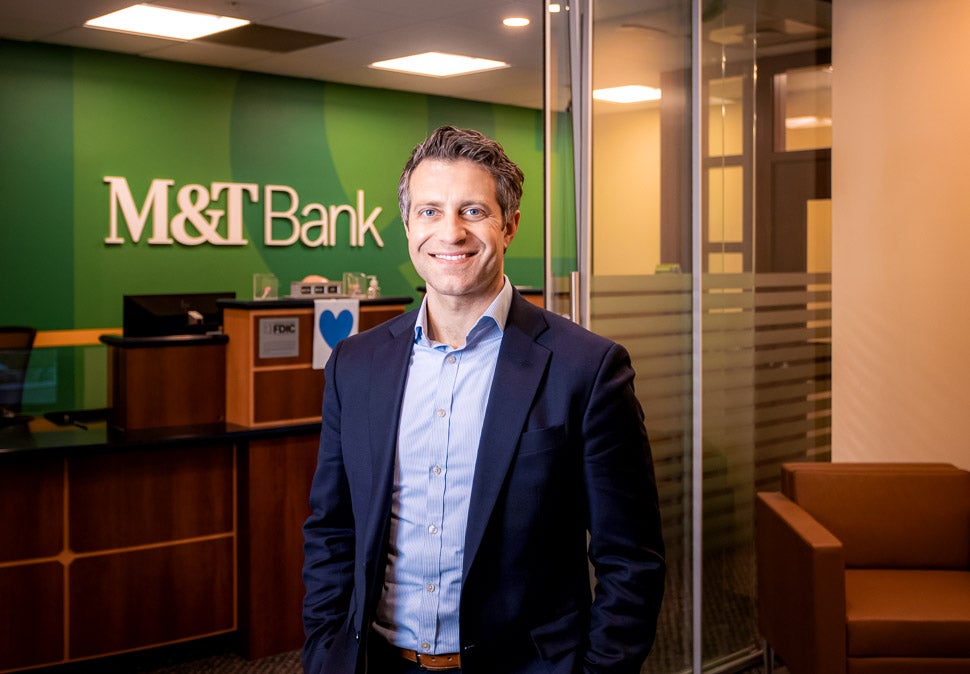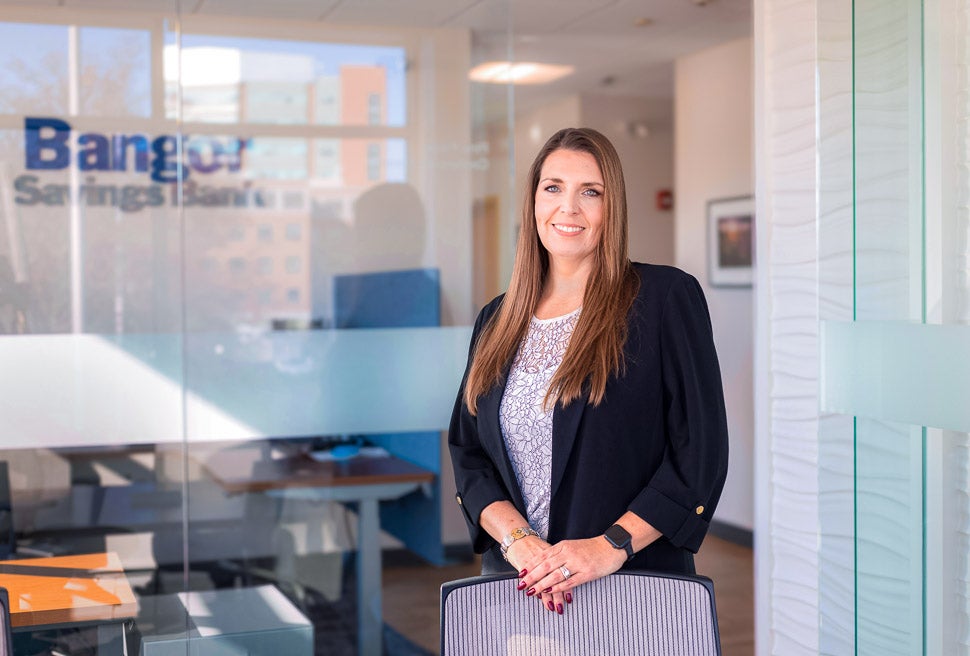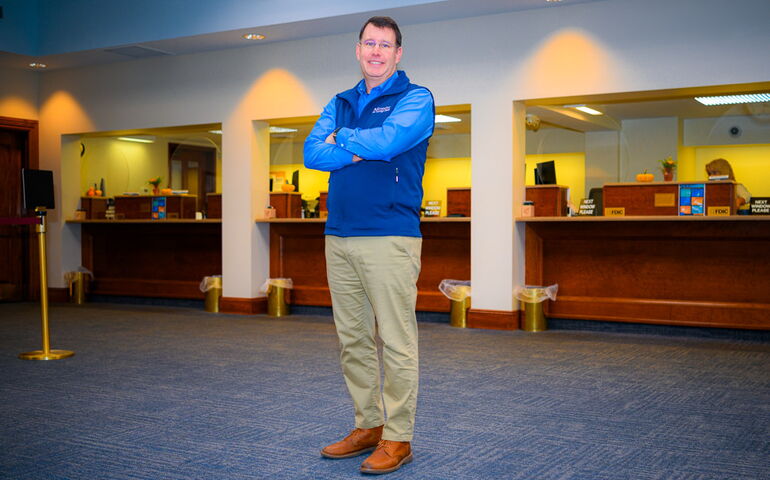Banks and credit unions are spending more to prevent check fraud, which is escalating nationwide even as people write fewer checks.
Get Instant Access to This Article
Subscribe to Mainebiz and get immediate access to all of our subscriber-only content and much more.
- Critical Maine business news updated daily.
- Immediate access to all subscriber-only content on our website.
- Bi-weekly print or digital editions of our award-winning publication.
- Special bonus issues like the Mainebiz Book of Lists.
- Exclusive ticket prize draws for our in-person events.
[bypass-paywall-buynow-link link_text="Click here to purchase a paywall bypass link for this article"].
Six checks were recently stolen from five customers of Kennebec Savings Bank — most likely from their mailboxes — and cashed at another bank after fraudsters “washed” away the original payee’s signature. That compares to only two stolen checks last year.
Then there’s the case of the mustached man in a blond wig who used his girlfriend’s debit card to deposit fake checks at a Kennebec Savings ATM. Caught on a security camera, the big-haired swindler looks a bit like Dolly Parton, if not for the mustache and cigarette dangling from his mouth.
“The police know who he is, but haven’t been able to locate him,” says Andrew Silsby, president and CEO of Kennebec Savings Bank.
While the Augusta-based bank has prevented more than $222,000 in net losses from check fraud so far this year, the hit to the bottom line exceeds $21,000. That’s up from a little more than $5,100 in losses in 2020, and Silsby says his bank is on pace to match last year’s losses of close to $61,500 from check fraud.
In Maine and elsewhere, banks and credit unions are investing in staff and technology to combat check fraud, which is escalating nationwide even as people write fewer checks. While not all institutions disclose check fraud’s financial impact or their crime-fighting resources, the costs for smaller, regional banks like the ones so prevalent in Maine are very real.
“Community banks, in particular, have faced challenges seeking reimbursement for breach of warranty claims filed with other financial institutions,” says Scott Anchin, vice president of senior operational risk and payments policy at the Washington, D.C.- based Independent Community Bankers of America. “As a result, community banks often choose to absorb losses so they can make their customers whole.”
Fewer checks, more fraud
The number of checks processed by the Federal Reserve, which handles about a third of the total, dwindled from nearly 19 billion in 1990 to 3.4 billion in 2022, as paying with debit and credit cards and automated clearinghouse transfers became more popular.
When people do write checks, they’re making payments in higher values, raising the stakes — and perhaps also the temptation — for criminals. In 2022, for example, the average check size was $2,652. That’s up from $679 in 1989, or $1,672 in today’s dollars, Federal Reserve data show.
Increasingly, fraudsters are targeting the U.S. Mail and postal carriers, according to a February alert issued by the Financial Crimes Enforcement Network, a bureau of the U.S. Treasury Department. That was especially true during the pandemic, when thieves went after mailed personal checks, business checks, tax refund checks and checks related to government assistance programs including Social Security payments and unemployment benefits.
Last year, banks reported more than 680,000 check fraud cases to FinCEN, nearly double the previous year’s filings.
What’s driving the crime wave? “It’s low-tech and relatively easy to do, there is a booming black market for stolen checks on the internet, and there is still a large pool of people mailing checks that are easy to obtain through mail theft,” says Kolt Bell, director of enterprise fraud services at KeyBank, a large Cleveland-based bank with 32 offices in Maine.
To protect customers’ accounts, KeyBank uses strong online sign-on requirements and security alerts on widespread fraud activities that the bank urges clients to review.
“Imposter scams, identity theft and synthetic identities are all things we see,” Bell says. “We advise clients that they have to be aware and extremely diligent about protecting their personal and bank information, and not fall for online or telephone scams.” KeyBank also recommends shredding old checks, ATM receipts and bank statements before discarding them.
High-stakes crimes
Fraudsters work alone and in groups, sometimes in a particular area before moving on.
One type of crime involves depositing a fraudulent check into an account and spending money before the check clears.
Another scam involves sending a fake cashier’s check sometimes touted as a lottery prize; the scammer then asks the recipient to cash and wire back the funds to cover taxes and fees.
A third category involves “money mules” — people who transfer money acquired illegally, whether in person, through a courier service, or electronically, on others’ behalf.
While that may sound like the stuff of a Hollywood feature film — think “The Sting” or “Catch Me If You Can” — losing money to fraud is a real-life nightmare for many.
Check “washing” is another common crime, since the chemicals used to remove ink on checks — nail polish remover, bleach, paint thinner — are cheap and widely available. Checks can also be deposited remotely and anonymously at ATMs or via mobile deposit — a convenience introduced after the 9/11 terrorist attacks that adds up to more headaches for Maine banks.
“Back in the day, we used to meet in Lewiston and pass each other physical checks in a suitcase,” Silsby recalls. That all changed after a law known as Check 21 took effect in October 2004, which created a new negotiable instrument called a substitute check. While the change paved the way for electronic check processing and other modern conveniences, it also did away with some of the security features that sit underneath paper checks.
One newer rip-off tactic involves emailing a check endorsed with a generic signature with typed instructions “for mobile deposit only,” then instructing the recipient to take a picture of the check and deposit the fake payment.
“Bank robbers come into the bank, but fraudsters try to get paid without coming into the bank,” says Silsby, who has two full-time employees working fraud cases. As an added precaution, the bank trains branch staff to make eye contact with all incoming customers. Like Walmart greeters, they are there in part to deter crime — though not always with success.
“Our collective staff members’ skills in detecting fraud have greatly improved, but it usually doesn’t take very long for fraudsters to find a new angle on an old scam,” Silsby says.
Better communication needed
At Damariscotta-based First National Bank, fraud losses in 2022 amounted to $232,000, and the bank expects a similar number in 2023, according to Tony McKim, the president and CEO.
While the figure includes all types of transactions, he says that check fraud makes up a significant chunk of the total.
The bank has one full-time employee dedicated to fraud and two to three others who help with investigations and reporting. First National only recently began tracking the value of attempted fraud prevented by employees, which stood at $1,008,906 at the end of the third quarter.
In part, McKim blames the rise in check fraud on antiquated regulation.
“The laws around check processing are outdated, which makes it difficult for financial institutions to communicate with each other when fraud occurs,” he says. “Improvements in these rules could help combat check fraud.”
To avoid fraud, McKim recommends that customers mail checks from inside a post office rather than dropping them into a public mailbox. It’s also a good idea to keep tabs on check activity in one’s account and notify the bank immediately if anything looks amiss, he says.
Another tip: “Explore other payment options, like autopay bill pay, ACH and Zelle to make payments securely within your online banking platform instead of using a check.”
Other efforts
At Camden National Bank, cases of fraud involving checks as well as financial losses due to check fraud have doubled over the last two years, according to Renee Smyth, the bank’s chief experience and marketing officer.
She says that while Camden National has not brought on additional staff to combat check fraud, it continues to invest in technology including artificial intelligence to analyze and detect unusual account activity. While the bank has prevented nearly 90% of attempted check fraud, Smyth says that it would be difficult to reach 100% given mail fraud and other risk factors.
“Camden National Bank is well-positioned to combat the current fraud landscape with a dedicated fraud mitigation team, tools to identify fraudulent activity and continued fraud education for employees and customers,” she says.

At M&T Bank, a Buffalo, N.Y.-based institution with 17 offices in Maine, commercial account holders can sign up for a service called “Payee Positive Pay” to review and return fraudulent checks early in the payment process.
While M&T has an internal fraud department, Maine Regional President Phil Cohen stresses that vigilance begins with on-the-ground staff in branches. Though Cohen writes few checks himself, he remembers waiting as a child outside a department store while his parents wrote checks at the register and expects check use to keep trailing off as other options multiply including Venmo and Apple Pay.
“It’s been fascinating to see how the technology side of the industry has evolved,” he says.
The view from trade groups
Like banks, credit unions are seeing an uptick in fraud cases, which are harder to detect for checks from out of state, according to Robert Caverly, vice president of advocacy and outreach at the Maine Credit Union League.
“National check fraud is usually facilitated by an organized crime group and typically involves the creation of counterfeit checks,” he says. “In a small state like Maine, it might be easy to spot the name of a fake local financial institution or even catch a misspelling or outdated logo, but when the checks appear to be coming out of state, identifying fraudulent checks becomes much harder.”
At the same time, Mainers still frequent credit union branches, where staff know their faces and signatures. “This helps add an additional layer of personal protection,” he says.
Along similar lines at the Maine Bankers Association, President and CEO Jim Roche points to knowledge and education as the biggest prevention tool. The association does its part via a monthly “fraud call” to compare notes about recent fraud attempts; the group also alerts all its members when it learns of a fraud attempt at any individual bank.
A crimefighter at Bangor Savings
At Bangor Savings Bank, Diane Porter is director of financial crimes, though the bank is so secretive about its anti-fraud efforts that it refuses to disclose the size of the team she oversees.
“I started in banking in the late 90s, when fraud trends were a bit different,” mainly around counterfeit currency and travelers’ checks and check kiting, she recalls. The latter typically involves passing checks at two or more banks using accounts with insufficient funds.
Her interest in fighting fraud started when she was an entry-level teller and continues to this day.
“Whenever I caught suspicious or unusual activity it was almost like a thrill,” she says. Porter says that for every $1 of attempted check fraud the bank sees, it prevents $22. While those numbers fluctuate, one constant is the bank’s partnerships with local law enforcement and experts from industry groups in fighting fraud.
Porter sees the role of people, from a nimble financial crimes team in the back office to tellers in branches, as essential to fighting fraud.
“Technology will never replace the human element,” she says.

